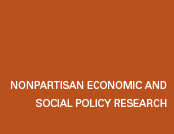 Featured Links
Featured Links
Related Policy Centers
Related UI Researchers
Publications on Family/Parents
| Viewing 1-5 of 585. Most recent posts listed first. | Next Page >> |
Assessing Child Support Arrears in Nine Large States and the Nation (Research Report)In September 2007, child support arrears had reached $107 billion. The purpose of this report is to provide information about the individuals who owe child support arrears, estimate how much arrears are likely to be collected, and identify the factors that have led to their rapid growth. We find that most arrears are owed by noncustodial parents who have no or low reported incomes. We estimate that 40 percent of arrears in seven large states are likely to be collected over 10 years. The primary reason arrears have grown is because many states have begun to assess interest on arrears.
| Posted to Web: January 14, 2009 | Publication Date: July 11, 2007 |
Demographic Survey Results from Nine-State IV-D Programs (Research Report)In FY 2007, the national child support program served 17 million children and collected $25 billion in child support, yet little is known about the underlying demographic and economic characteristics of the individuals served. To remedy this lack of information, Courtland Consulting and the Urban Institute, under contract with the federal Office of Child Support Enforcement, surveyed nine state child support programs about their caseloads. We found that state child support programs are able to provide considerable amounts of information about their clients, but key characteristics proved difficult to obtain, such as the poverty status of the families served.
| Posted to Web: January 14, 2009 | Publication Date: December 18, 2007 |
Providing Maternity Care to the Underserved: A Comparative Case Study of Three Maternity Care Models Serving Women in Washington, D.C. (Research Report)This comparative case study describes the organization, delivery, and content of care of three maternity care models serving low-income women at risk of poor birth outcomes in Wards 5, 6, and 7 in Washington D.C. The first model, a birth center, provides prenatal care, birth services, postpartum follow-up, and infant and child health care. The second is a safety net clinic, which provides a variety of primary health care services, as well as prenatal care services. A not-for-profit teaching and research hospital represents a third option in which prenatal and postnatal care is provided through an on-site obstetric clinic.
| Posted to Web: January 14, 2009 | Publication Date: January 14, 2009 |
A Quick Look at U.S. Households and Their Assets (Fact Sheet / Data at a Glance)Boosting assets enables individuals and households to invest in life goals and to enhance long-term economic stability and social protections. This fact sheet, drawn from Asset Building and Low-Income Families, presents an array of key statistics.
| Posted to Web: December 09, 2008 | Publication Date: December 09, 2008 |
Scholars Say Asset Building is Vital to Economic Well-Being of Low-Income Familes (Press Release)Fast-changing labor markets and growing economic inequality mean that low-income families need more than stop-gap income support in hard times, according to McKernan and Sherraden, coeditors of the volume. Their analysis finds that building wealth—putting money in a bank account, saving in a retirement fund, owning a home—is vital for the economic security and advancement low-income families. Most government policies ignore this key goal, they point out, and some undermine it. McKernan, Sherraden, and other top experts size up the current data on assets, analyze the benefits of asset holding, and consider policy responses—making the book the first comprehensive review of asset policy.
| Posted to Web: December 09, 2008 | Publication Date: September 11, 2008 |

